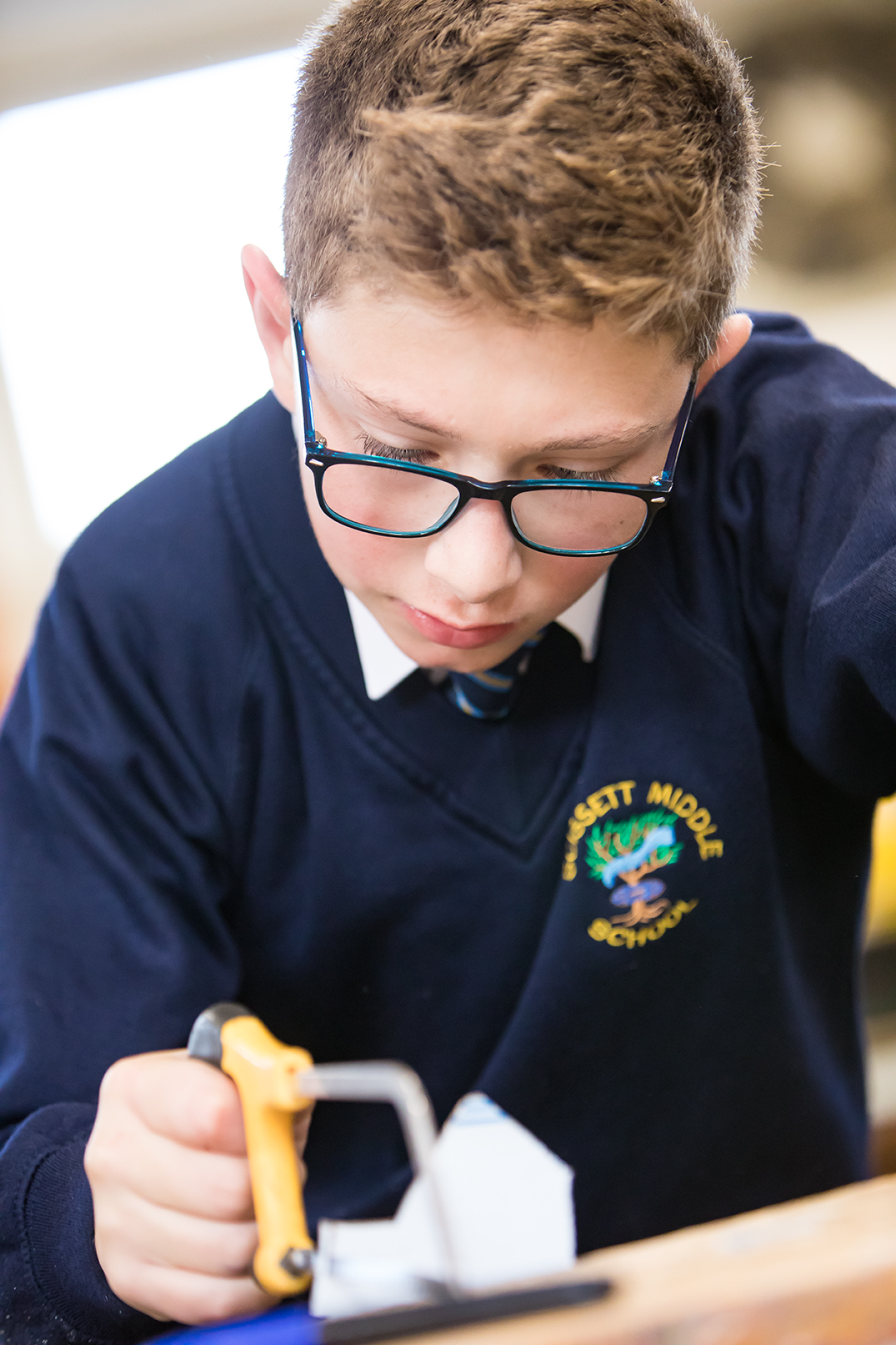
Year 6
Pupils are introduced to the workshop and the associated general Health and Safety when working in this environment. The material focus for the year is metal and in particular Aluminium. Pupils learn about the Design Cycle and the various stages that enable a successful product to be completed by the end of the topic. The focused design and making tasks revolve around creating a functional novelty coat hook. Pupils learn how to develop a final design through research, product analysis, specification writing and the generation of initial ideas. They then learn basic hand tool skills using hacksaws and junior hacksaws (wasting), files (shaping) and how to smooth the edges using abrasive materials (finishing). Pupils also learn how to set up and use the pillar drill to create the screw holes and a rawhide mallet to create the hook. Finally, pupils are taught about the importance of reflecting (evaluation) upon both their design work and the completed product and how it can influence future projects.
Year 7
In Year 7 pupils are expected to work with greater accuracy and the focus material is wood. The introductory mini project is to make a memo holder. This project helps them to learn how to mark out accurately using tri-squares, waste using coping saws and finish the components to a set size in preparation for their main project. The pupils learn about structures including loads, forces, beams, columns and triangulation. Equipped with this new knowledge, pupils then work in small groups to design and make a wooden bridge to span a clear gap of 1000mm and support a static load of 75kgs! Pupils continue to develop their hand tool and machining skills through the use of coping saws, disc sander, jigsaw and different clamping and bits with the pillar drill. The final design and make project involves making a tea light lantern from plywood cut on the laser cutter. This provides pupils with an introduction to using CAD (Computer Aided Design) and CAM (Computer Aided Manufacture).
Year 8
In Year 8 pupils continue to build upon their design and making skills from the previous year and the focus material is acrylic (a type of plastic). Pupils learn how to use the CAD software in greater depth which allows them to produce the final design for their clock. By this point the pupils will have researched the design brief, created design drawings and created a simple massing model from card. The components for the clock face are cut using the laser cutter and assembled using a special adhesive. A mechanism is then installed to create a functional product. The final project is the design organiser (mixed material challenge). This provides pupils with a showcase to demonstrate the knowledge and skills that they have developed during the three years by creating a quality product using acrylic, aluminium, plywood and softwood.